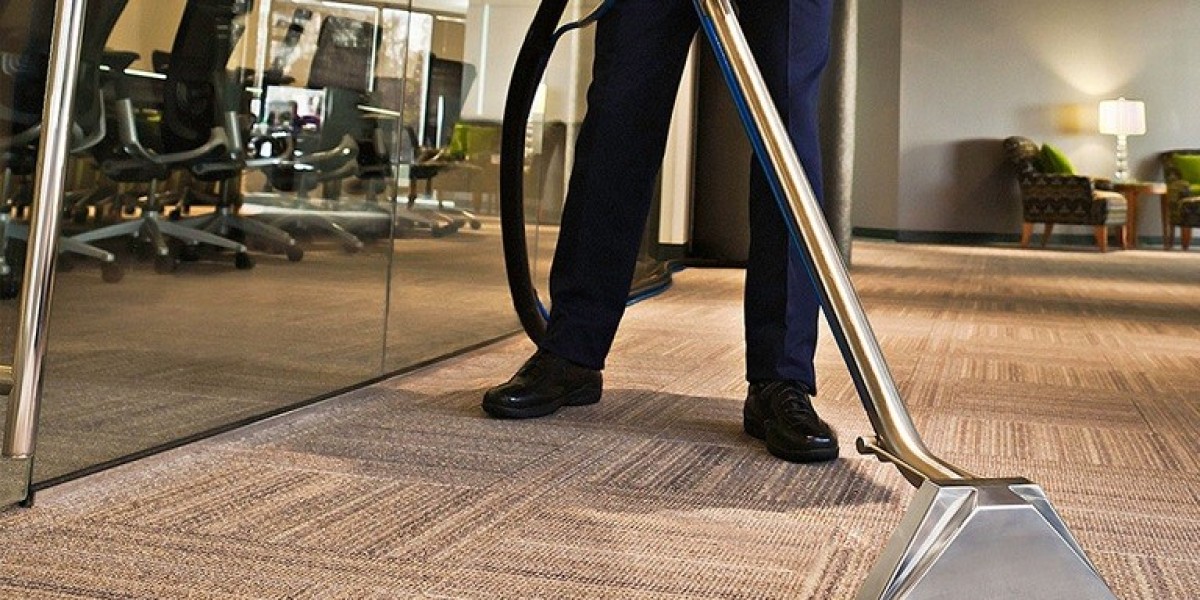The Purrfect Passage: Expert Tips for Cat Flap Installation
For cat owners, the desire to supply their feline buddies with freedom and independence while preserving the security and comfort of their home is a common goal. A cat flap, seemingly an easy solution, uses just that-- permitting your cat to come and go as they please without needing you to play doorman. Nevertheless, an inadequately installed cat flap can lead to draughts, security vulnerabilities, and frustrated felines. Therefore, understanding the nuances of cat flap installation is vital for both your cat's wellness and your assurance.
This post functions as a thorough guide to cat flap installation, offering expert tips and recommendations to make sure a smooth and effective job. Whether you're a skilled DIY enthusiast or a first-timer, this guide will equip you with the knowledge to create the purrfect passageway for your beloved cat.
Choosing the Right Cat Flap: The First Step to Success
Before you even consider tools and templates, it is important to choose the ideal cat flap for your requirements and your home. The marketplace provides a diverse variety of alternatives, each with its own set of features and benefits. Consider these elements when making your choice:
- Type of Cat Flap: Cat flaps are not a one-size-fits-all option. They come in different types, each offering different levels of security and benefit:
- Standard Manual Cat Flaps: These are the most basic and most cost effective alternatives, enabling any cat (or small animal) to go into and exit. They are suitable for low-security environments.
- Magnetic Cat Flaps: These flaps react to a magnet connected to your cat's collar. They offer somewhat better security by avoiding roaming animals from getting in.
- Infrared Cat Flaps: Similar to magnetic flaps, these utilize an infrared sensing unit that reads a special collar tag. They are more safe and secure than magnetic flaps and less prone to disturbance.
- Microchip Cat Flaps: The most advanced alternative, these flaps are activated by your cat's unique microchip, guaranteeing just your pet emergency door installation can acquire entry. This uses the greatest level of security and control, avoiding unwanted animals from entering your home.
- Material and Durability: Cat flaps are typically made from plastic or aluminium.
- Plastic flaps are typically more cost effective and lighter but may be less resilient and more vulnerable to weathering.
- Aluminium flaps are more robust, weather-resistant, and safe, often including a more powerful locking system.
- Size of Your Cat: Ensure the flap opening is large enough for your cat to travel through easily without having a hard time. Consider your cat's size and breed when choosing. Procedure your cat from chest to ground and add a couple of inches for comfy clearance.
- Installation Location: Where will you be setting up the cat flap? Doors, walls, and windows each present various installation difficulties and require particular types of cat flaps or additional accessories like tunnels for thicker walls.
- Budget: Cat flaps range in price from fundamental manual models to modern microchip variations. Set a budget plan and think about the long-lasting value and security advantages when making your choice.
Preparation is Paramount: Setting Yourself Up for Success
When you have actually selected the perfect cat flap, appropriate preparation is essential to a smooth installation. Rushing into the process can result in mistakes and frustration. Put in the time to strategy and gather everything you require in advance:
Choosing the Right Location: Carefully think about the location for your cat flap.
- Security: Choose an area that is not quickly available to burglars and ideally away from public view.
- Ease of access for Your Cat: Ensure the area is quickly accessible for your cat, both within and outside. Think about the height from the ground and any barriers.
- Convenience for You: Select a location that is hassle-free for access and maintenance however does not disrupt the flow of your home.
- Avoiding Utilities: Check for any surprise wires, pipelines, or structural elements within the wall or door where you plan to install the flap.
Gathering the Necessary Tools and Materials: Having all the right tools at hand will make the installation process a lot easier. Important tools typically consist of:
- Cat flap set: This must consist of the cat flap itself, a design template, screws, and potentially a tunnel extension depending on the design and installation type.
- Pencil and ruler/tape step: For marking and measuring properly.
- Drill: With suitable drill bits for pilot holes and possibly bigger bits for cutting if needed by your chosen technique.
- Jigsaw or Keyhole saw: For cutting the opening for the cat flap (depending upon product and installation method).
- Screwdriver: To protect the cat flap in place (frequently a Phillips head screwdriver).
- Shatterproof glass and gloves: For security during cutting and drilling.
- Sealant (optional): To seal around the cat flap and prevent draughts and water ingress, particularly for external doors and walls.
- Spirit level (optional): To guarantee the cat flap is installed directly.
Measuring and Marking: Accuracy is essential for an appropriate fit.
- Utilize the template offered: Most cat flap repair flap packages feature a template. Use this to properly mark the cutout area on your chosen place.
- Consider your cat's height: Position the design template at an appropriate height for your cat. The bottom of the flap should be low enough for comfy entry and exit however not too low that it enables rain or dirt to get in quickly.
- Double-check measurements: Before you start cutting, confirm all your measurements and markings to avoid mistakes.
Step-by-Step Installation in a Wooden Door (Example)
Installing a cat flap in a wood door is a common DIY job. Here's a basic detailed guide:
- Mark the Cutout: Tape the template supplied with your cat flap set onto the door at the desired location. Utilize a pencil to trace the overview of the design template onto the door.
- Drill Pilot Holes: Using a drill and a drill bit somewhat larger than the width of your jigsaw blade (or keyhole saw), drill pilot holes at each corner of the significant overview and potentially a couple of along the straight edges to make beginning the jigsaw easier.
- Cut the Opening: Using a jigsaw or keyhole saw, carefully cut along the significant overview, linking the pilot holes. Take your time and follow the line properly. Ensure you wear shatterproof glass and gloves during this action.
- Test Fit and Sand (if needed): Before totally inserting the cat flap installation guarantee - www.repairmywindowsanddoors.co.uk - flap, test fit it in the opening. If it's too tight, carefully sand down any rough edges of the cutout until the flap fits snugly.
- Place and Secure the Cat Flap: Place the 2 halves of the cat flap (inner and outer frame) into the opening from either side of the door. Align the screw holes.
- Screw Together: Using the screws supplied, tighten the two halves of the cat flap together. Do not overtighten, as this might damage the door or the cat flap.
- Seal (Optional): Apply sealant around the edges of the cat flap where it meets the door frame for included weatherproofing and insulation.
Installation Considerations for Different Materials
While wooden doors are reasonably uncomplicated, setting up cat flaps into other materials requires various methods:
- Glass Doors and Windows: Installing a cat flap in glass requires specialized tools and knowledge. It is strongly advised to hire a professional glazier to cut and install a cat flap in glass. Trying this yourself can be harmful and dangers shattering the glass.
- UPVC Doors: UPVC doors frequently have reinforced panels or may contain metal elements. Installation can be complicated and might need professional help. Thoroughly check the door's building and construction before attempting DIY installation or speak with the door maker's standards.
- Walls: Installing a cat flap in a wall requires creating a tunnel through the wall thickness. This typically includes acquiring a tunnel extension set that matches the depth of your wall. The installation process resembles door installation but requires cautious planning and potentially more extensive cutting and sealing.
Post-Installation Tips: Welcoming Your Cat to Freedom
When the cat flap is set up, the job isn't quite completed. Here are some tips for assisting your cat change and making the most of your new cat flap:
- Introduce the Cat Flap Gradually: Don't expect your cat to utilize the flap right away. Start by propping the flap open and motivating your cat to stroll through it with treats and favorable reinforcement.
- Draw with Treats and Toys: Place deals with or toys on either side of the flap to incentivize your cat to explore and utilize it.
- Persistence is Key: Some cats adjust quickly, while others may require time. Be client and prevent forcing your cat through the flap, which can create negative associations.
- Inspect for Draughts and Security: After installation, look for any draughts or spaces around the cat flap. Ensure it is securely fitted and functioning properly.
- Regular Maintenance: Keep the cat flap tidy and without particles. Periodically inspect the locking mechanism and hinges to guarantee they are functioning smoothly.
By following these tips and taking your time with the installation process, you can develop a safe, practical, and welcoming cat flap for your feline buddy, improving their freedom and improving their life while preserving the convenience and security of your home.
Often Asked Questions (FAQs) about Cat Flap Installation
Q: Can I set up a cat flap in any door?
A: While cat flaps can be installed in a lot of types of doors, some require more specific strategies or professional pet door installer assistance. Wood doors are the most convenient for DIY installation. Glass doors and UPVC doors might require professional installation.
Q: How high should I install a cat flap?
A: The perfect height depends on your cat's size, but normally, the bottom of the flap ought to be around 10-15 cm (4-6 inches) from the ground. This enables most felines to go through easily without having to crouch too low.
Q: What tools do I really require for cat flap installation?
A: Essential tools include a drill, jigsaw or keyhole saw, screwdriver, pencil, ruler/tape measure, and shatterproof glass and gloves. A sealant gun and sealant are suggested for external doors and walls.
Q: How long does it require to set up a cat flap?
A: For an easy installation in a wood door, it can take anywhere from 1 to 3 hours, depending on your DIY experience and the intricacy of the door. Installation in other products or walls may take longer.
Q: What if I am not positive in my DIY abilities?
A: If you are uneasy with DIY projects, it is constantly best to hire a professional handyman or carpenter to set up the cat flap for you. This guarantees an appropriate and safe installation, particularly for more complex installations like glass or UPVC doors and walls.
Q: How can I stop roaming felines from utilizing my cat flap?
A: Microchip residential cat door installation flaps are the most effective way to prevent stray animals from entering your home as they just open for your cat's registered microchip. Magnetic and infrared flaps use some, but less reputable, defense.
Q: Do cat flaps let in draughts?
A: Modern cat flaps are developed with draught-excluding features like brushes or magnetic closures. However, proper installation and sealing are crucial to reduce draughts.
Q: How do I train my cat to use a cat flap?
A: Patience and positive support are essential. Start by propping the flap open, using deals with and toys to lure your cat through. Slowly reduce the openness of the flap as your cat gets more comfortable.
Q: Can I set up a cat flap in a wall?
A: Yes, cat flaps can be set up in walls. This usually requires a tunnel extension set to connect the inner and outer frames through the density of the wall. Wall installations might be more complex and need mindful planning.
Q: What maintenance is needed for a cat flap?
A: Regularly clean the flap and surrounding location to remove dirt and debris. Examine the hinges and locking system occasionally and tighten screws if required. Lubricate hinges with silicone spray if they end up being stiff.








